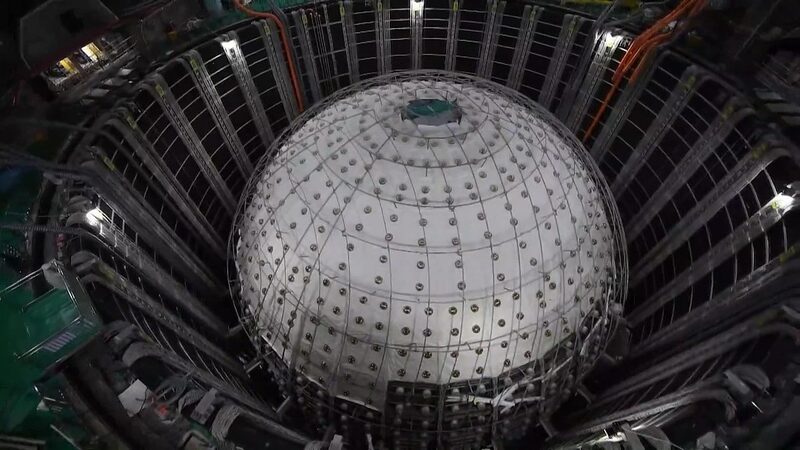🚀 Big news from the Chinese mainland! China has started filling the world's largest transparent spherical neutrino detector with ultrapure water. This monumental step means we're one step closer to unlocking the secrets of the universe! ✨
Nestled deep underground in Kaiping, Jiangmen City, the Jiangmen Underground Neutrino Observatory (JUNO) is like something straight out of a sci-fi movie. Imagine a giant acrylic sphere, 35.4 meters wide, submerged in a pool that's 44 meters deep, all inside a massive underground hall. Pretty epic, right?
This colossal detector will be filled with 20,000 tonnes of liquid scintillator, a special liquid that lights up when neutrinos pass through it. Surrounding it are over 45,000 photomultiplier tubes that will capture these tiny flashes of light. It's like having a galaxy of stars all focused on spotting the universe's most elusive particles! 🌌
So, what's the big deal about neutrinos? 🤔 Well, they're tiny, almost massless particles that zip around at near-light speeds and hardly interact with anything. They’re so sneaky that billions pass through you every second without you even noticing! That's why they're nicknamed \"ghost particles.\" 👻
By studying neutrinos, scientists hope to answer some of the biggest questions about the universe, like why there's more matter than antimatter. JUNO aims to measure the neutrino mass hierarchy, which could be a game-changer in particle physics! 🧪
This project isn't just a solo mission. Over 700 scientists from 17 countries and regions are teaming up on JUNO, making it a truly global effort. 🌍 And with other major neutrino experiments underway in Japan and the U.S., it's an exciting time to be following the latest in cosmic discoveries!
The filling process is happening in two stages. First, they'll fill the detector with ultrapure water over the next couple of months. Then, they'll replace the water inside the acrylic sphere with the liquid scintillator over six months. By August 2025, JUNO should be up and running, ready to start collecting data and blowing our minds! 💥
Stay tuned, science fans! The universe has many secrets, and JUNO might just help us unlock them. 🗝️✨
Reference(s):
China's transparent spherical neutrino detector reaches critical stage
cgtn.com




